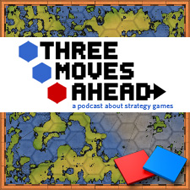In spite of my tragic turn towards real time games, I think play by email remains one of my favorite multiplayer modes. I have been fortunate to find a small group of people who are mostly steadfast in their turns, and who almost never quit because they “forget.” At the moment, I am heavily engaged in a Civil War scenario designed for the 19th century mod of Century of Warfare, the final edition of The Operational Art of War.
It’s been an odd little war, mostly because I keep forgetting all the house rules that the mod designer has asked us to follow. Headquarter units have to be nearby for any attack. Ships have to stop at some coastal forts for a turn so that the opponent gets an opportunity to shell them. Troop transport is simulated through the movement of what are, in effect, dummy units, to prevent you from moving thousands of men. The house rules are a kludgy way to simulate mid-nineteenth century warfare in a game designed for twentieth century battles.
I have been losing this scenario so far mostly because my game playing habits have not adapted to the shift in time. Moving your troops every turn proves to be a recipe for quick and easy destruction. The attrition rate in battles is grotesque in scale, especially for the attacker. I have more troops on the way to replace the poor boys who I killed with foolishness, but it’s going to be an uphill fight.
This game is, in fact, at a point where I could have just thrown in the towel. My opponent is firmly entrenched in a major supply area. Even if I take it back, it will cost me much of the army it has taken ten turns to amass. If this were a single player game, I would almost certainly have reloaded once Baltimore fell – I neglected to garrison it.
But multiplayer is a different animal. I tend to play it out even when things are getting miserable, because, chances are, my opponent is having a great time. If he/she offers surrender and I truly believe that the battle is hopeless, I will accept the end of the game. But history keeps going for the loser; so should the game. Besides, as a longtime Montreal Expos fan, I’ve oft suckled at the breast of misplaced optimism. Maybe things will turn around.
This “keep going anyway” attitude of mine makes the instability of most PBEM games surprising. I had two War!: Age of Imperialism games going once, and then both stopped about the same time. Victory was assured for the same guy in both games, I think, but there was no agreed on surrender – just no turn returned. I don’t nag people I barely know, so there was no point in poking people to complete their turn. But the poor state of PBEM etiquette is probably why so many people prefer LAN or Network games, even for turn based titles.
My doggedness, even in my failures, makes me want to try Civilization III in multiplayer. I haven’t yet, largely because Civ in multiplayer doesn’t seem right. The scale of the game is no more ridiculous than the uber-Civil War game I am in the middle of, and some of my favorite single player moments in Civ have been me leading my ragged bunch of halfwits to triumph after geography and the Mongols have beaten me down.
Civ IV promises muliplayer that isn’t cobbled on as an afterthought, but it remains to be seen how effective or popular it will be. In the meantime, email me or comment here if you want to try this MP Civ III experiment. I promise not to quit.

